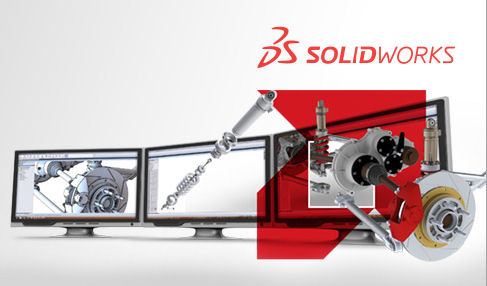Check it Out: Design and Simulate without Compromise
April 29, 2013
 |
I knew this old lady who shelled a ton of moola for a first generation hybrid car that she parked in her backyard so that thieves couldn’t see it. I also knew the guy who sold it to her. In the showroom he called it a “statement” car as in “you’re making a ecological statement” with it. But, after hours, he derided it as a “wait a minute” car. See, when stopped at a light, the electric motor kicked in, saving gas. When the light turned green and you hit the pedal, the car struggled awake and switched to gas to get rolling, making you wait a minute. Maddening. Even burning gas alone, the car was underpowered.
If you wimped out on the graphics when shelling out for your shiny new workstation or if you’re operating with a last-generation system, you’re probably bashing away on an underpowered “wait a minute” box and not making full use of your SolidWorks workflows. You know the symptoms: You upgraded to SolidWorks 2013 and wonder if you’re getting the full oomph out of it. You run RealView to make your scene stunning to wow the client, but the lines seem jagged. You now plan your lunch break around your Abaqus structural or multiphysics analyses. You know that you could multitask more productively with a multi-display set-up, but you also know that it’s not going to work well enough to bother.
It’s maddening. And it simply does not have to be that awful. You can be more productive and SolidWorks, Abaqus, PhotoView 360, RealView, and so on can be more efficient if only your workstation were set up to handle what you do properly. At the other end of today’s Check It Out link, you hit a dedicated web page from AMD that shows you what a workstation with well-matched graphic acceleration can mean for you. While the site is optimized for SolidWorks users, all CAD/CAM/CAE users need to digest what’s being said here.
AMD crammed a ton of data onto this page. The gist of it is that AMD says that its new W-Series of AMD FirePro professional-level graphics cards are designed and certified to handle advanced SolidWorks workflows as well as simultaneous engineering jobs like modeling with rendering and simulation. They then show you how in a number of ways.
For one, benchmarks. Three of them. First, you can download the full results of some SPECapc 2013 benchmarks. These show that with AMD FirePro W-Series graphics SolidWorks 2013 performance can increase up to 3x over version 2012, although 2012 also shows some nice gains as well. Two, there’s a benchmark graph showing the performance gains with Abaqus Standard. And there’s a competitive video comparing the performance gains of SolidWorks 2013 running on a mid-range AMD FirePro W5000 graphics card with the other guy’s similar offering.
You get details on how you can now leave on SolidWorks 2013’s anti-aliasing features and how you can create nice renderings without the jaggies. There’s a handy chart matching job imperatives with graphic cards and a nifty 8-page guide on tuning your workstation developed by the good folks at Develop3D. And it’s rounded out with a case study on what the right workstations with the right graphics accelerators mean to the engineering team at a manufacturer of optical sorting equipment.
IMHO, the point of it all is simple: It’s counter-productive to have an underpowered workstation. Underutilizing the features of SolidWorks 2013 because you don’t have the right graphics equipment wastes time and money. It also mocks all that talk you hear about time to market, efficiency, and productivity. Hit the link over there and see for yourself if you agree. Lot of good stuff to know.
Thanks, Pal. – Lockwood
Anthony J. Lockwood
Editor at Large, Desktop Engineering
Subscribe to our FREE magazine, FREE email newsletters or both!
About the Author
Anthony J. Lockwood is Digital Engineering’s founding editor. He is now retired. Contact him via [email protected].
Follow DE





